#she is developing a strong interest in archaeology and history
Explore tagged Tumblr posts
Text
I really like my icon because it looks like whatever I post, Tecna Winx Club is saying it
#she is developing a strong interest in archaeology and history#and also long fantasy novels#she is my favorite winx and I’m gonna dye my hair her color soon
7 notes
·
View notes
Text
IWTV S2 Ep1 Musings - Cezare Romulo: History through Visual Context in Ploiești, Romania (Pt2)
I am on the hunt for any and all information on AMC's OCs, The Vampire Daciana, and the Vampire Cezare Romulo.
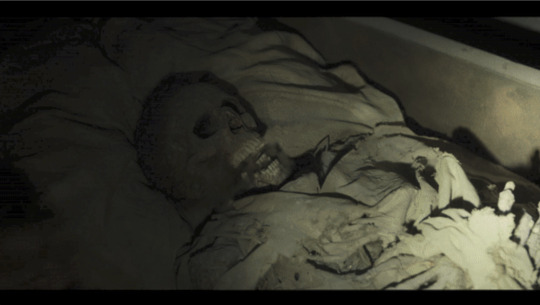
In Part 1, I pointed out that Daciana was likely AMC's nod paying homage to the Dacians (aka Geto-Dacians or Daci, as the Greco-Romans knew them), the ancient Romanians of c. 10th century BC - 7th century AD, in the Transylvanian/Wallachian regions of the Carpathian Mountains.
In AR's TVC, vampires tend to reflect the era they lived/died in, preferring to wear their traditional clothes & surround themselves with antiques from their time period--like grave goods for the dead. However, from what I've found, there was nothing about Daciana's clothes/home indicating that she was an ancient Dacian (X).
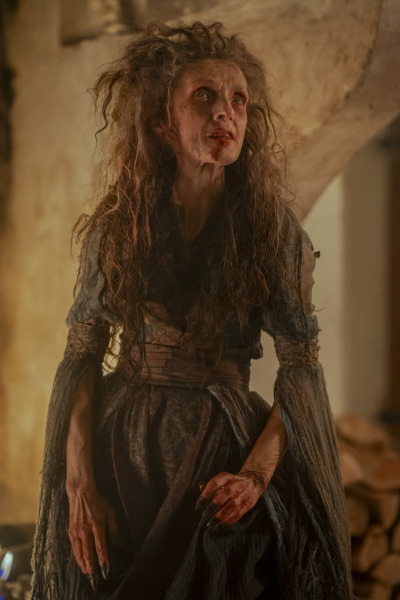
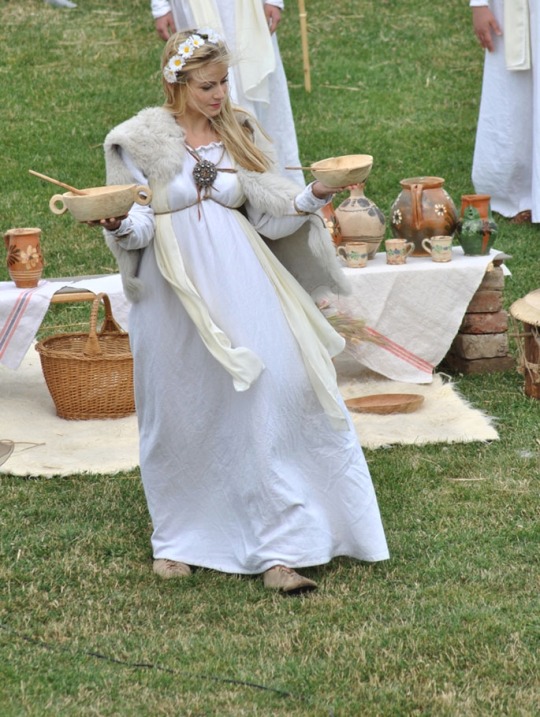

(Granted, if she IS that old, then that definitely increases her odds of being an "Old God" that got caught in the Great Burning.... 👀)
Regardless, I wanna turn my attention to Cezare Romulo, cuz while I'm tentatively ruling out Daciana as being Dacian, I haven't dug into The Vampire Cezare yet. So here goes nothing!

Nomenclature
First thing that stood out to me is his name. Cezare's obvs Caesar, but I wonder if that's his name, or his title (like how the Latin caesar became kaiser in German & tsar in Russian).

In Oltenia (Wallachia) there are archaeological remains of a Roman-Dacian fort called Romula, dated to the 2nd century AD. I couldn't find much about it, so we'll just put a pin in that. Something way cooler is that according to Google Translate, Romulo means Romulus, in both Romanian & Italian. That's hella interesting, cuz Romulus was the founder of Rome (8th century BC), twin brother of Remus, whom he killed Cain vs Abel style to be the ruler. In some versions, Romulus "died" under VERY mysterious circumstances:
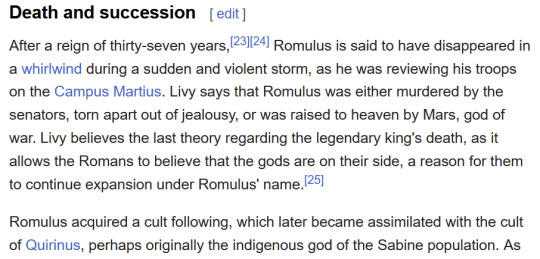
So for AMC's OC vampire to be named after two Romans (Caesar & Romulus) who were both incredibly violent & bloodthirsty rulers says a lot. Especially considering with how Daciana described him:
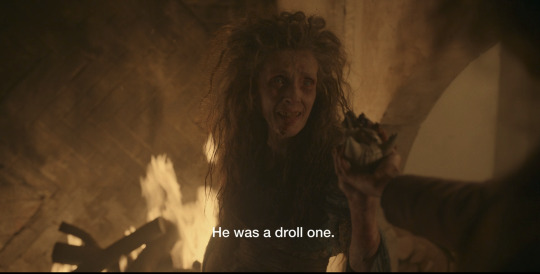

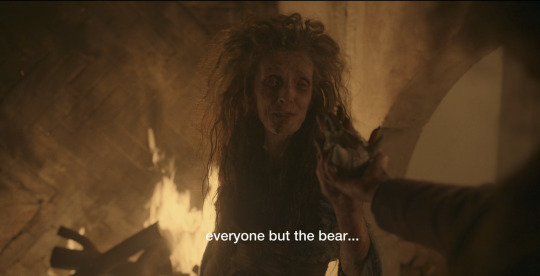
The Castle: Bears & Wolves (Totems & Crests)
Cezare killed a whole circus troupe traveling through Transylvania (Sibiu), and only spared their bear. I wondered why this was so noteworthy--vampires will kill anyone for food (or sport), esp. if they don't follow the creed about only killing Evil Doers (as Cezare obvs. didn't--unless he knew something about that troupe we don't...! 👀 Clowns ARE evil, after all 💀). Vamps don't tend to kill animals, unless they need to defend themselves--but aren't circus bears kept in cages or something? So why would it matter?
So I reckon that Daciana's point was actually that Cezare LIKED the bear, and probably KEPT it, as his pet.
Cuz look at his castle: the joint's filled with taxidermy.
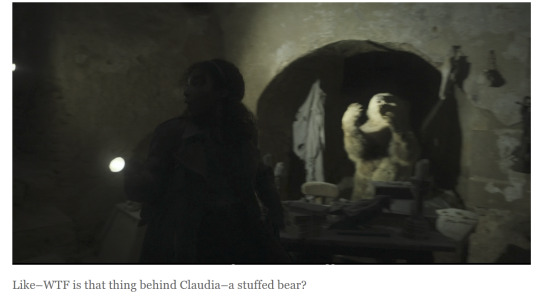

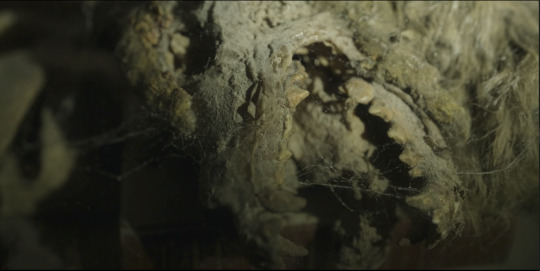
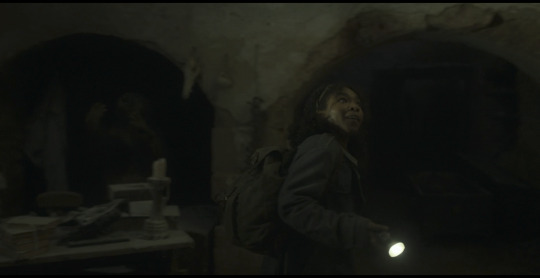
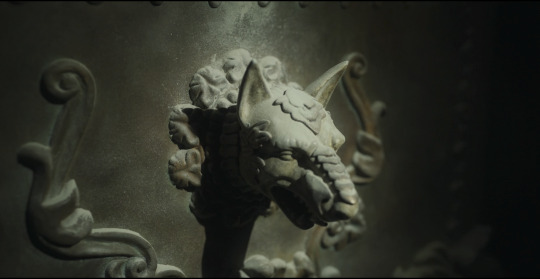
I think some of these animals are bears and/or wolves (Romulus & Remus were raised by wolves in the woods....). And that tracks with what is known about the main Dacian animal, the wolf (or "Draco"/dragon), (X X X).
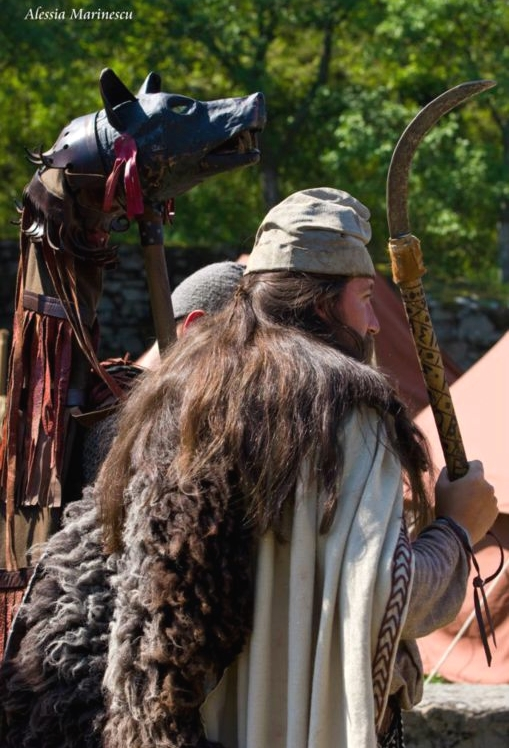

Sava, Cipriana. "Cultural heritage tourism--Dacian fortresses in the Orăştie area, Romania." MEFkon 2020 INNOVATION AS AN INITIATOR OF THE DEVELOPMENT. (2020): 290-311.

Strechie, Mădălina. "The Dacians, the Wolf Warriors." In International Conference Knowledge-Based Organization, vol. 23, no. 2, pp. 367-373. 2017.
(ISTG when is AMC bringing AR's Wolf Gift books into the Immortals Universe--I need my werewolves already, gosh darnit!)
Cezare clearly felt a strong affinity for animals, especially bears.

Which isn't surprising, considering the life-death-rebirth symbolism of the bear in Romanian traditions like the Ursului (bear dances).

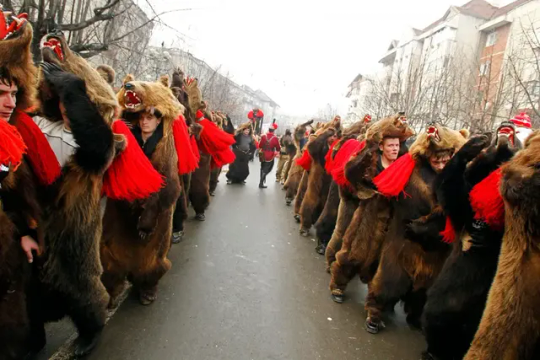
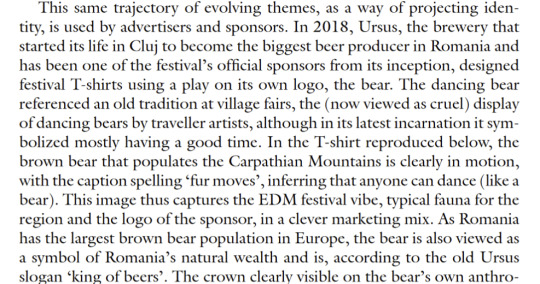
Trandafoiu, Ruxandra. "A Tale of Two (or# EverMore) Festivals: Electronic Music in a Transylvanian Town." Eastern European Popular Music in a Transnational Context: Beyond the Borders (2019): 213-237.
The Castle: Architecture
As for Cezare's castle ruins, I have no idea what's going on.

The most interesting thing was Cezare's final resting place in this catacomb-like structure, lying in a stone sarcophagus.
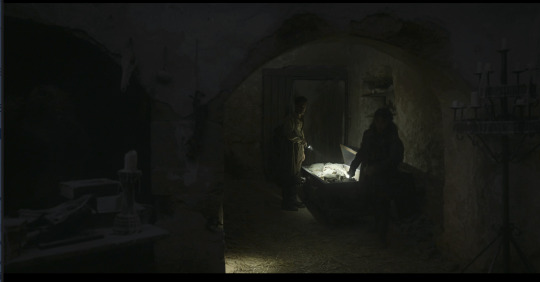
Like, there are Roman-era burials found across Romania, but Cezare having a STONE sarcophagus is interesting, cuz apparently Transylvania's Daco-Roman inhumations are more often brick:

As stone sarcophagi only became more popular around the 3rd-4th century AD
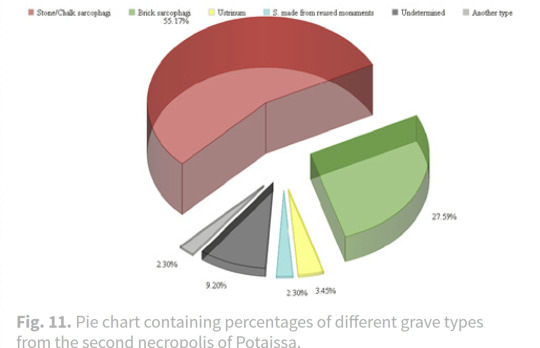
Cocis, Horatiu. "Some remarks on the Roman necropolises of Potaissa." Journal of Ancient History and Archaeology 2, no. 2 (2015).
Before largely falling out of favor/use by the 5th-6th century AD, except for clergy & royalty:

Maggio, Ariane. "Burial Practices in Europe." Encyclopedia of Global Archaeology (2018): 1-6.
So, does this possibly give us a date for him, approx 2nd-6th century AD? But how long was it until he died? (HOW did he even die?)
What about the rest of his castle? Like, the place is an utter ruin, and there's barely anything left of that dark AF exterior that I can use.

Is this a studio set, or was it filmed on location somewhere? IDFK. There's hundreds of Romanian archaeological sites--let alone Daco-Roman ones--it kinda reminds me of davas (fortresses/strongholds), (X X), if not for the masonry being different.
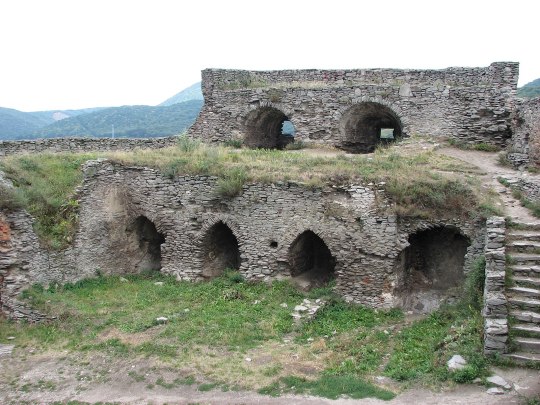
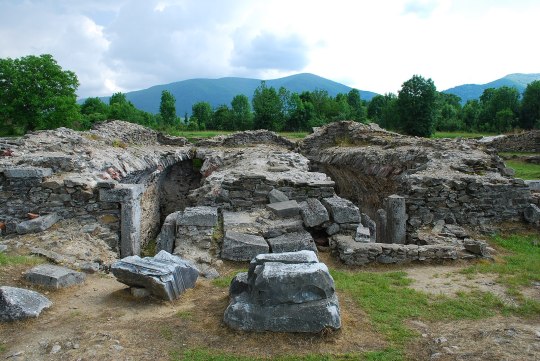
So yeah, I have no frikkin clue, y'all; this is all I've got, LOL. ¯\_(ツ)_/¯
Results? Inconclusive! Again! 😂😭
I don't know if AMC was deliberately implying that Cezare Romulo (or Daciana) had anything to do with the ancient Daco-Romans...but it's interesting to think about!
#interview with the vampire#the vampire daciana#iwtv tvc metas#werewolves#ancient rome#medieval europe#read a dang history book
33 notes
·
View notes
Text
I still can't save my updated stats/bio page (javascript ban), so I'll put everything down here.
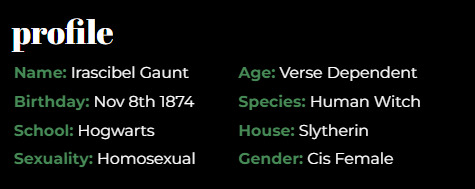
Birthplace: The Underburgh, Lothian, Scotland Parents: Nereus Gaunt & Joanna Gaunt (née Fawley) Languages: English, French, German, Parseltongue Wand: 10" Ebony with Dragon Heartstring Core

Height: 5' 6" Hair Colour: Chestnut Brown/Dark Brown Eye Colour: Hazel/Green Extended Family: Marvolo Gaunt (First Cousin), Ominis Gaunt (First Cousin), Hector Fawley (First Cousin), Noctua Gaunt (Aunt), Salazar Slytherin (Ancestor) Familiar: Mole (Oriental Shorthair) Sgnificant Other: Elvie Fortescue (Married in 1895)
Friends: Ominis Gaunt, Sebastian Sallow, Anne Sallow, Imelda Reyes, Nerida Roberts, Priscilla Wakefield, Garreth Weasley, Poppy Sweeting, Samantha Dale, Zenobia Noke, Natsai Onai, Amit Thakkar, Lucan Brattleby. Skills: Defensive magic, Daredevil broomstick stunts, Herbology, Animal husbandry, Gardening, Violin & Oboe, Mischief-making Interests: Muggle and Wizarding History, Gardening, Foraging, Herbology, Horticulture, Literature, Fashion, Archaeology.
BIO
Born in November of 1874, Irascibel Gaunt was the only progeny of an arranged union between Nereus Gaunt and Joanna Fawley. By the time of her birth, her father had already become an established and prolific magical antiques dealer throughout the British Isles and the rest of the world, and had accumulated some family wealth of his own. He was able to start his own branch of the Gaunt family in the wizarding section of Edinburgh named the Underburgh, wanting to keep distance between himself and the rest of his family, most importantly his domineering older brother, in southern England.
Unfortunately, Joanna was a feeble, passive woman who never took to being a mother, so Nereus hired a Governess named Thora Fawcett to raise Irascibel from infancy and take care of the house. In the care of Governess Fawcett and House-elf Pim, Irascibel eventually grew into a quickwitted, mischievous child who took great joy in rebelling against the strict rules of her pureblood household.
Though Nereus had hoped for a son, Nereus begrudgingly paid for expensive tutors to homeschool Irascibel in arithmetic, etiquette, literature, geography, wizarding history, french, and german. When she had consumed every book in the house’s library and exhausted her tutors, Irascibel took to sneaking out of the house to learn more about the muggle world that her parents so despised. She would often go to the muggle libraries, and stores in the city. These disappearing acts often involved dosing Thora with a sleeping draught and making Pim think she was home studying in her room.
Irascibel’s excursions to the outside world gave her a deep appreciation for muggle society and the natural world, which only served to solidify her opposition to her parent’s pureblood supremacist views.
Leaving the isolation of her family home could not have come soon enough for Irascibel. The year she turned twelve, she departed for the Highlands to be schooled at Hogwarts. It was not until her arrival at Hogwarts that she discovered that the House of Gaunt was larger than just herself and her Father. She met Ominis Gaunt, her first cousin, on that first day and they became quick friends. By extension, she also became good friends with Sebastian and Anne Sallow after being sorted into Slytherin. The four would consider themselves close friends throughout their time at Hogwarts.
Irascibel became dormmates with Imelda Reyes, Anne Sallow, and Nerida Roberts. She relished the time away from her family, and took every opportunity to experience the world while at school, often going on day trips over the weekends. Others would go with her, including students from other houses with whom she had also developed strong friendships. During the summers, Irascibel rented a room in the valley to avoid returning to Edinburgh, all while knowing that each day brought her closer to graduation, at which time her father would marry her off to preserve the blood of Salazar Slytherin.
In sixth year, Irascibel became closer to a redhaired Ravenclaw named Elvie Fortescue. They eventually began courting, though they would break up briefly during seventh year over Irascibel’s obsessive studying and inability to deal with her stress about graduating.
After graduation, Nereus Gaunt expected his daughter to return home to accept her arranged marriage, potentially to Ominis Gaunt, her cousin. However, Irascibel returned for a family dinner and informed her parents that she had married Elvie Fortescue, a half-blood. Her Father was enraged, so much so that he cast at her, which she blocked before fleeing the room. Irascibel ran from the room, her Father casting at her from behind, and grabbed Pim (the family house-elf) by the hand.
They escaped the Underburgh together and took a carriage out of the city. Irascibel gave Pim the option to leave and be free, but Pim opted to stay with Irascibel on her journey to the small homestead she and Elvie had purchased in the western Highlands. Pim remained with the couple for the rest of their lives.
Irascibel later joined the war effort when World War I broke out, though it was illegal for witches and wizards to do so. She returned to Scotland once the war was over and lived out the rest of her days in hiding from the outside world. Only a select few people knew who she was and that she was alive. Elvie passed away at the age of 66 in 1940, leaving Irascibel a widow. Irascibel lived with Pim until her death in 1952 at the age of 78, but not before revealing herself to Albus Dumbledore, having heard about the murder of Morfin Gaunt by Tom Riddle. Irascibel was buried in a crypt with Elvie in the hidden section of the Greyfriars Kirkyard.
Irascibel was known as a compassionate, brave, fiery witch who rejected the ideals of her family and believed, above all, that magic was a gift and that it should be used to make the world brighter for all. She was also known for her muddy hobnail boots, her broomstick stunts, and her exceptionally long, wavy brown hair, which she either kept in a braid bound with a black ribbon, or loose with sticks and moss stuck in it. Unfortunately, Irascibel was not remembered by history, overshadowed by the reputation of the Gaunt family and the dark witches and wizards it produced.
4 notes
·
View notes
Text
Days 54-55 – Monday-Tuesday, 17-18 July The end of this cruise
Monday
Our morning excursion was to Delos, to one of the most extensive archaeological sites we have seen. It was close to a kilometre across the shoreline, and ran up the hill for several hundred metres.
Our guide was not a good guide. She had plenty of knowledge but didn’t deliver it to us. It was very hot, so as soon as the tender brought us to land, she led our group into a corner of some ruins where she was in the shade, but not all of us could cluster close enough to hear her and still be in the shade. She had her microphone back around her shoulder so nothing of what she said was audible via the devices we were all wearing. She wasted quite a lot of time delivering an almost identical history to the one we heard in yesterday's lecture, and when we finally started walking around the site, she bounded ahead and kept up her monologue, without ever waiting for her charges to catch up. It was a really bad tour and she should never be invited to do another one. I think she just liked to hear her own voice and kept rambling away, even when nobody was close enough to hear anything she said.
The site itself was interesting, a sprawling area with lots of mainly crumbling ruins, but with some small features intact. We saw quite a few of the relics of which we had seen photos in yesterday’s lecture but that was a good way of understanding the scale of some items.
There was a small museum, but it was closed to visitors, although the toilets were open and received strong patronage from our group. Our guide then took us to a place where people could climb the mountain up to the top. I explored some of the lower slopes but went no further and returned to where Heather was sheltering in some shade, chatting with another woman. I went down to the shore and looked for birds. I have been very surprised how few birds are around. My Merlin app indicates that there are quite a few species to be found in this part of Greece, but they are certainly well camouflaged, or just hiding. I saw two Common Sandpipers very briefly, but even the common birds – gulls and sparrows, for example – are rarely seen. My Greek bird-list currently stands at only eighteen species and that is after two weeks in Athens and a week around all the islands we have visited. Even the number of individuals seen in each species is surprisingly low – at least far fewer than I would have expected.


I saw at least one species at the site, one of the most common birds I have seen on the trip - the Hooded Crow. Perhaps he was looking for breakfast so this little lizard had better watch out.
In the early afternoon, the ship moved to anchor at Mykonos and quite a few people disembarked to wander the town area. We chose to stay on board and only left our cabin to sample the late afternoon pastries and drinks – and don’t forget dinner an hour or so later.
Tuesday
Today is the last day of our cruise and we were back on the mainland of Greece, landing at Nafplion in the Peloponnese. After the ship docked, we boarded buses to take us to Mycenae, where the first Greek language and alphabet was developed, and that was the hub of the powerful Mycenean civilisation in the late Bronze Age.
We saw a place where they believe people were buried upright – now just a roofless hole in the ground after the tomb raiders had removed absolutely everything. We visited the nearby air-conditioned museum (just love the museums in this heat!) with its extensive collection of mainly well-preserved exhibits.

There would be room to bury quite a few upright bodies in this tomb. Note the entrance on the far side.
Back in the sunshine, we walked up to the Lion’s Gate, set in the walls of the fortified city. The way the gate is constructed is interesting. It is a massive post and lintel structure (we were told that the lintel alone weighs well over thirty tonnes) with a triangular piece above the lintel. This piece is quite thin to avoid its weight breaking the lintel but allows the surrounding wall to be built higher and stronger with overlapping stones holding the triangle in place. This stone has a relief carved into it: the figures of two lions, without heads, standing on either side of a central pillar. I forget the precise symbolism of this, but it is all about emphasising the power of Agamemnon, the king who ruled from inside the city. The gate design is apparently quite common right across the region.


Not a good photo, but the Lion's Gate, with a slightly better one of the triangular capstone.
We explored the area inside the city, with some walking up the hill to the buildings above, but I spent the time examining a place where twenty-two bodies were believed to have been buried in seven connected rooms just inside the gate. They know very little about the individuals involved, but assume they were important people in their time.
(After a long debate with Heather, exploration of numerous conflicting websites, our diverging recollections of what our guides told us, and Ponant’s official – patently incorrect – record of our trip, we have come to a conclusion. We have to take what our guides tell us at face value, but there are certainly numerous apparent conflicts, some pretty firmly established, between what they tell us and what appears in other places, on websites we have explored, and so on. A bit frustrating, but like History that is written by the victors, Facts are only versions of people’s conclusions that stand until someone has a stronger opinion, or new ‘facts’ come to light.)
We drove a very short distance to an extraordinary ‘beehive’ tomb, where some believe Agamemnon was buried. It is an amazing structure in the shape of a beehive, built with rows of overlapping stones, and finally completely buried to form a man-made hill. It has an impressive entrance passage that was also buried under the hill, just waiting for some lucky archaeologist (a German, Heinrich Schliemann) to discover and excavate it. Alas, he was a little too late – the tomb raiders got to it first, maybe a few thousand years earlier. It is still a pretty amazing structure that probably housed a number of burials (each requiring the entire hill to be excavated and reinstated). There is a chamber off to one side that was roped off so we couldn’t see inside, but which is thought to have contained other bodies in antiquity.
One of our guides took some photos of Heather and me at the site but they look pretty pathetic. I am not criticising his photography skills, but it is hard to take a good photo of tiny us against the monolithic background of a structure like this.

The entrance to (possibly) Agamemnon's beehive tomb. Judging by the height of the door, people must have been taller five thousand years ago.
Back on the bus, we drove on to Epidaurus, to a twelve-hundred seat amphitheatre with extraordinary acoustics, dating back to the fourth century BC. With my poor hearing, I didn’t appreciate it, but one of the guides stood at a focal point on the stage and dropped a coin – that was heard to the top of the theatre and to the extreme sides. Another guide rattled a piece of paper with the same result. I think they said there were three (or maybe five) spots on the stage area where this phenomenon happens and the actors stand in those positions to speak during performances. They still have regular performances today and one of our guides who was a speech therapist performed a speech to prove the acoustics on the day.
1 note
·
View note
Text
Big Introduction Post!
Alright, me, my sibling and my boyfriend have made it to Claw Island on our joint play through. So time to introduce our characters!
Archaeologist Biarr (mine, pronouns: he/him, Chronomancer Mesmer)

Biarr showed a strong interest in history from a young age, always preferring to uncover old knowledge rather than discover new information. This was at odds with his mesmer magic, until he developed a mirror based backwards scrying technique that enabled him to discover ancient sites with an incredible amount of accuracy. This lead to him graduating with honors from the College of Statics. However, instead of pursuing fieldwork the way he wanted, Biarr was pressured by his politically minded father into becoming an aide for Councilor Ludo, an old mentor of Biarr’s. Stifled and bored, Biarr jumped at the chance to inspect and report on a Statics archaeological excavation in Bloodtide Coast. There he was shown a newly uncovered ancient Orrian mirror and attempted to use it to perform his backward scrying technique. The spell backfired, showing Biarr a horrific vision of the future where Zhaitan had corrupted all of Tyria before the mirror shattered causing the loss of Biarr’s eye. Returning to Rata Sum to recover, Biarr became involved in the events of the base game and ultimately broke ties with the Arcane Council and his father over the treatment of Professor Gorr and his research. Joining the Durmond Priory, Biarr rose quickly through the ranks and, surprising himself, become quite close with his partner Seiran. Loosing her at Claw Island was incredibly difficult for him.
Bjazz (my sibling’s character, pronouns: she/her, Engineer)

Biarr’s younger sister and a talented but highly distractible Engineer. She was very close to her father growing up and a bit of a poppa’s girl. This lasted up until she entered the College of Dynamics and began to struggle academically. Despite the myriad of tutors her father provided, Bjazz ended up flunking out. Her father, enraged and concerned that such a thing might endanger his current political campaign for a seat on the Arcane Council, disowned her. Bjazz drifted from krewe to krewe until ultimately catching the eye of Zojja during the fifth annual Snaff Prize competition. After some exciting adventures including the rescue of Professor Gorr and his research, Bjazz ended up joining the Order of Whispers as she didn’t feel strong enough or smart enough for the Vigil or the Priory. Despite perhaps not making the best field agent, any worries she might have had about that decision were immediately discounted upon meeting Tybalt Leftpaw. The two bonded incredibly quickly and work together incredibly well. The charr soon became a second, and much better, father to her. His loss at Claw Island was devastating to Bjazz.
Mortt the Bulwark (my boyfriends, pronouns: he/him, Spellbreaker Warrior)

A Synergetics dropout and former member of the Order of Whispers, Mortt left the organization after one too many arguments with Preceptor Halvora Snapdagger over what does and does not count as “excessive force”. Mortt himself claims he left because “you don’t get paid for saving the world”. Whatever the actual reason, he traveled to Rata Sum and set up shop using his skills in risk assessment and asset protection to cater to wealthy types in need of some muscle with a side helping of brains. When hired by Biarr and Bjazz’s dad, he fully expected to get saddled with a couple of annoying rich kids and was surprised to find that (mostly) wasn’t the case. Despite some tension, Mortt and his charges ended up bonding and the three stood together to protect Professor Gorr from the Arcane Councilor. It was only after Biarr and Bjazz left to join their respective orders that Mortt discovered that their father had been in on the plot to hide Gorr’s discoveries and hadn’t been to concerned that his children had stood in the way. Disgusted, Mortt quit and traveled to Lion’s Arch to find a new job. There he was hired by sylvari Firstborn Trahearne, who was on his way to Orr. However, the scholar insisted that they first stop at Claw Island, where Mortt ran into not one but two familiar faces.
#connor's stuff#biarr#archaeologist biarr#bjazz#mortt#mortt the bulwark#screenshots#asura#and bjazz doesnt have an elite spec yet#though im very excited to find out what they pick#also the thing i love about mortt is that one of his main character inspirations was brick from borderlands#which is excellent#a bunch of new friends!#Bjazz is a whole ass lesbian#i love Bjazz’s ears so much#but yeah they’re all fucking messes just trying to get through life
17 notes
·
View notes
Link
Prominent among the eclectic hoard of treasures in London's British Museum is the imposing figure of Hoa Hakananai'a, a four-tonne basalt statue from the Chilean Pacific territory of Rapa Nui - named Easter Island by European explorers.
The statues, known as moai, were carved by the island's indigenous Rapa Nui people to embody the spirit of a prominent ancestor, with each considered to be the person's living incarnation.
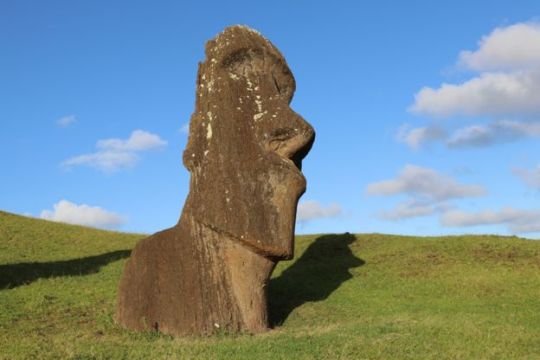
The moai are one of the main attractions for visitors but to locals they have spiritual significance
"The British taking the moai from our island is like me going into your house and taking your grandfather to display in my living room," says Anakena Manutomatoma, who is a native of the island and serves on Rapa Nui's development commission.
"For us, the repatriation of Hoa Hakananai'a is an absolute priority."
Long way from home
The statue, along with a second, smaller moai known as Hava, were given as gifts to Queen Victoria in 1869 by the captain of HMS Topaze, Commodore Richard Powell.
His crew excavated Hoa Hakananai'a from a cliff top near the Rano Kau crater in November 1868, and the Queen donated the two statues to the British Museum.
It has been on display 8,500 miles (13,700km) from its spiritual home ever since.
Alongside its clear cultural and spiritual importance, Hoa Hakananai'a is a particularly fine example of the statues that see thousands of tourists visit Rapa Nui each year.
"In some ways the statue is unique because it is made from a very hard basalt lava rock, unlike the majority of statues on Rapa Nui. As such, it is unusually well-preserved and its features are pristine," says archaeologist Mike Pitts, who spent several nights at the museum in 2012 conducting a detailed scan of Hoa Hakananai'a.
"It also has a unique collection of petroglyphs on its back that almost certainly were not part of the original statue, so you have a second layer of history embodied in the stone."
Calls for repatriation
There has been a recent awakening on the island with regard to repatriating the moai, which under Chilean law are considered to be part of the land.
Sculptor Benedicto Tuki, a Rapa Nui native who has dedicated his life to promoting and preserving the island's indigenous culture, attributes the newfound interest in bringing the moai home to a generational shift.

Benedicto Tuki has devoted his life to preserving the island's indigenous culture
"Perhaps in the past we did not attach so much importance to Hoa Hakananai'a and his brothers, but nowadays people on the island are starting to realise just how much of our heritage there is around the world and starting to ask why our ancestors are in foreign museums."
In order to facilitate the return of the Hoa Hakananai'a, a name often translated as "lost" or "stolen friend", Tuki has offered to make an exact replica to take the statue's place in the British Museum, free of charge.
"Perhaps it won't possess the same ancestral spirit, but it will look identical," the sculptor says. "My only wish is for him to return home; for me this is worth far more than any amount of money. As long as I live, I will fight to see our ancestors returned to the island."
Asking to be heard
Tuki made the offer after the mayor of Rapa Nui, Pedro Edmunds, sent a letter to the British Museum in August requesting the return of the two statues.
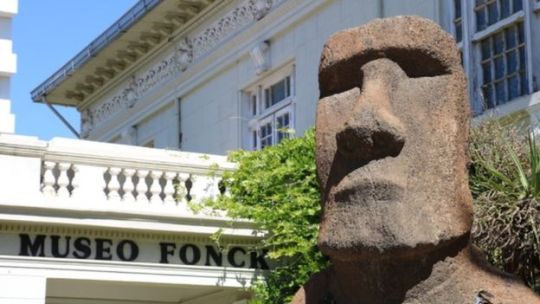
There is also a moai outside the archaeology museum of the Chilean city of Viña del Mar
In response, the museum invited a delegation from Rapa Nui to visit the moai and discuss the request.
A group including Ms Manutomatoma will arrive in London on 19 November to propose to the museum's directorate to have Hoa Hakananai'a returned to the island in exchange for Tuki's replica.
Chile's Minister for National Property Felipe Ward, who is leading the delegation, says he is optimistic. "The strong understanding and mutual respect between Chile and the UK can help in this instance."

Anakena Manutomatoma (first from left) and Felipe Ward (third from right) will form part of the delegation
"We are not demanding anything as yet, just asking to be heard. We believe that when this happens, the museum and its authorities will understand the importance of the moai as the soul of the island," he says.
For Tuki, bringing Hoa Hakananai'a back to Rapa Nui is just a first step. Eventually, he would like to see all moai which were removed from the island returned, starting with those that are currently on the Chilean mainland.
"In order for Chile to show that it is serious about supporting our cause, we need to have the moai on the Chilean mainland returned to the island," he says.
Talks are currently under way to return a moai from the Chilean city of La Serena but there are also moai in Viña del Mar and also as far afield as the US, New Zealand, France and Belgium.
Anakena Manutomatoma says that while she, too, dreams of bringing all of her ancestors home to Rapa Nui, her gaze is firmly on Hoa Hakananai'a.
"We have mourned him for too long. It is time to stop crying and take action to bring him home."
#archaeology#arqueologia#rapa nui#easter island#moai#moai statues#chile#ecuador#art#arte#history#historia#british museum#england#united kingdom#uk
340 notes
·
View notes
Text
Watching Classic Doctor Who!
#1: An Unearthly Child, 1963.
A new blog series in which I (a 20 year old who grew up with NuWho) watch every surviving episode of Classic Who ever and share my thoughts!
[all images/screen caps mine. feel free to use, credit if you’re feeling extra nice!]
(previous posts: [1], [2])
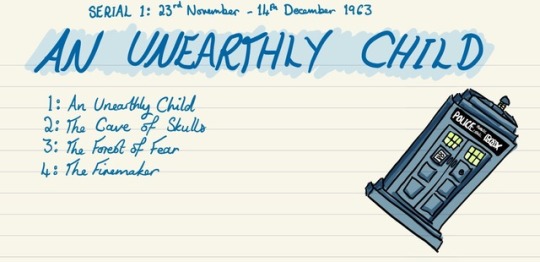
At 5:16 pm on Saturday 23rd November 1963, when the first ever du-du-du-du sounded from television screens across Britain, whilst a strange light cut a black background and morphed into strange abstract pattern while the now iconic wee-wooo-woooo played, I don’t think anybody could have predicted that almost 56 years later, that theme would be one of the most recognisable tunes in television history.
Over 40 years later, a little girl watched a blue box fly through strange circles of light and heard the same theme play for the first time, the words “Doctor Who” appearing in an orange oblong shape, and my own love for this remarkable programme was born. Just as my father, aged eleven in 1963 had been drawn in by this exciting new adventure in time and space, I was smitten, and thirteen years later my love is still going strong. So read on for my thoughts/review/commentary on the first ever story that Doctor Who gifted to us, An Unearthly Child! I’ll try and keep it spoiler free for those who haven’t seen it before.
The first thing I noticed was how similar the original theme music arrangement was to the current version today. I miss Murray Gold’s music massively but I love this nod to the show’s roots that Segun Akinola has given us! It really fits with Chibnall’s back-to-basics take on the show. The original title sequence is so trippy and cool, amazing given the limited technology in the early sixties!
The first main characters we meet are schoolteachers Ian Chesterton and Barbara Wright, who muse over strange but brilliant fifteen year old student, Susan Foreman, whose grandfather “doesn’t like strangers”. Barbara lends Susan a huge book on the French Revolution, which she promises to have read by the next morning. Gallifreyans seem to have the skills to read incredibly fast, and I like the nod to this concept in the first ever episode of the rebooted series, where Nine reads a whole book in seconds.
When Barbara and Ian follow Susan “home”, she enters an empty junkyard and disappears. The only thing in the yard is a blue police telephone box... This show instantly feels wonderfully familiar and I know I’m in for a great time.
And then we meet the Doctor, the original Doctor! William Hartnell is old and crotchety and clever and wonderful and although a far cry from Matt Smith or Jodie Whittaker, I instantly feel that this is the Doctor, and he is brilliant.
Ian: I think we’d better go and fetch a policeman. And you’re coming with us!
The Doctor, very sarcastically: oooh, am I?
I love the sass!
Without giving too much else away, episode 1/4 culminates in the Doctor kidnapping Barbara and Ian (another great nod from Chibnall by having Thirteen do the same thing to her first companions, albeit accidentally) and I did laugh out loud when the T.A.R.D.I.S. taking off made Barbara and Ian faint, VERY dramatically. The big reveal of the bigger on the inside doesn’t disappoint, and once again this grainy old black and white programme from 35 years before I was even born feels completely like home.
The next three episodes are set in 100,000 BC, where the Doctor and his companions find themselves trying to escape a tribe of savage cavemen. My archaeological knowledge did ruin this a bit as by the Middle Palaeolithic, man definitely had command of fire (evidence suggests that homo erectus were already using fire!) and it is rather an insult to our poor hunter-gatherer ancestors dressing them up like Neanderthals and suggesting they have no concept of friendship. But the story is great fun and we get to see some early character development, although I was not at all happy when the Doctor was willing to smash the skull of an injured caveman just because he was slowing down their escape! I like the theory that Ian stopping him is what cemented his love for humanity and stopped him from going ‘too far’, though, and makes me think of the wonderful friendship that was Donna and Ten.
And a favourite quote,
The Doctor: Fear makes companions of us all.
He says this to Barbara when she remarks on him being kind to her, and is such a central idea to Doctor Who. Of course Moffat would make it that CLARA implanted this sentiment in a young Doctor’s mind in Listen, which is really quite infuriating as while I liked Clara, Moffat’s lowkey obsession with her as a character was rather tiresome after a while. Still, I like the connections that can be made between Classic and NuWho.
Needless to say they make it out alive and fly off to a new planet, where a Geiger counter needle creeping to “critical” leaves us on a cliffhanger for the next story: The Daleks. On the screen we see a (incredibly unrealistic) jungle world. We have arrived for the first time on the planet Skaro.
Some overall thoughts then.
Characters:
Susan’s premise is great, but her constant screaming gets annoying after a while. Apparently this is why Carole Ann Ford left the role, and tbh I can see why. I love her’s and her grandfather, the Doctor’s relationship though!
Barbara and Ian are cuties together! I ship it. Ian is certainly a “tiresome young man” at times but I like the two overall. Look how cute!!

The Doctor! Yes, I love Hartnell! I’m looking forward to him softening up a bit but I can really see where Capaldi took inspiration from him and I do love grumpy space grandpa!Doctor.
The story:
Prehistoric inaccuracies aside, it was a fun story. The set and props are laughable at times but it’s the low-budget-ness of this show that is one of the things I love. Shoutout to this hilarious dead wild boar:

I’d like to take a minute to cry about the fact that ‘John Smith’ isn’t any old alias, but a member of one of the Doctor’s grandaughter’s favourite Earth bands. (S)he’s such a softie at heart. I wonder what alias Thirteen would take.
The T.A.R.D.I.S. interior is great. It has the original round things! I love the round things!

Fun facts:
The bones in the ‘Cave of Skulls’ came from an abattoir. Apparently they smelt awful under the hot studio lights.
The assassination of JFK took place the day before the first episode aired. They re-aired the episode the next week before the second ep as viewing figures had been low due the the news.
And that’s me about done! Sorry this post has been SUPER long, but I hope it’s an interesting read for modern and classic Who fans alike! Next post, my thoughts on the first ever meeting of the Doctor and the Daleks.
#doctor who#dw#classic doctor who#classic who#william hartnell#the first doctor#susan foreman#carole ann ford#barbara wright#ian chesterton#jaqueline hill#william russell#review#classic who review#an unearthly child#the tardis#i review classic who
10 notes
·
View notes
Photo

Note: This has been drawn as a reference guide which is free to use if you wish to draw this character. However, please do not repost or claim as your own, thank you The fifth born in my MLP Next Gen series!
Orin
Personality: Determined, confrontational, nervous, creative, cynical.
Likes: Making art, knitting, crocheting, sparring.
Dislikes: AppleJack’s overprotective-ness, ponies underestimating him, being called soft, early mornings.
Story;
Orin is the son of AppleJack and Rockhoof and twin brother to Pale Umber. Orin is the smallest and skinniest of the bunch, not very strong like his sister but makes up for it with a sharp mind, creative insight and his ‘fight me’ attitude.
During her pregnancy with the twins, AppleJack was told one twin (Umber) was exceptionally larger than the other (Orin). Umber was almost crushing Orin in the womb, which could lead to health problems for the small baby or even death. Knowing this, AppleJack decided to go ahead with the pregnancy and the twins were born via cesarean. Umber had all of her parent’s natural strength and was perfectly healthy but Orin was very weak. It took a long time for him to start breathing. He was placed in a incubator and doctors tended to him day and night. The following weeks were touch and go, Orin almost dying several times. It got so bad that doctors recommend they switch off the life support machine they eventually had to put Orin on. Both Rockhoof and AppleJack were devastated but they refused to give up on him. Eventually, Orin pulled through and, once home, developed to be a normal, healthy pony.
Despite this, AppleJack was left traumatised by the whole ordeal and grew very overprotective of Orin, not allowing him to do several things when he was a child. At one Apple Family Reunion, AppleJack didn't let Orin take part in the children’s activities and instead had him quilting with Granny Smith. This put a damper on Orin’s confidence and it didn't help that his father and sister were the strongest ponies in Equestria. The straw that broke the camel’s back though was when he was picked on and beaten by a group of bullies at school and he had to be saved by Umber, his cousin Bramble and his friends Upsy Daisy and Tornado Rush. After talking with Rockhoof, Orin revealed he believed himself to be weak and he would never amount to anything. Understanding how Orin felt, Rockhoof was determined Orin would never feel like that again. So he began giving both his children fighting lessons without AppleJack knowing. The kids loved it and became exceptionally skilled fighters.
The only good thing that came out of AppleJack’s overprotective behaviour was that it gave Orin a chance to find his special talent. Being stuck quilting with Granny, he found he really enjoyed it, especially after learning the significance of the quilt in his family’s history. At age just five, he threw himself in learning every textile and fabric technique he could, creating a tapestry which outlined the entire history of the Apple Family. He submitted it in the art tent of the Ponyville Country Fair and won first prize and several special awards in his category, much to AppleJack and Rockhoof’s pride. It was then he received his Cutie Mark, the first in his group of friends to do so.
When Orin was seven, he also took part in the super secret rescue mission Upsy Daisy, who had been taken by Tirek and Cozy Glow. Orin’s part in the plan was to pick the lock of the cage Daisy was put in and distract Tirek when they were discovered. The whole rescue almost came to a disaster, though in the end, Daisy was safe and everyone was transported back home by Discord. Umber and Orin only barely escaped a scolding when Bramble broke down so instead they were quickly grounded and sent to bed.
Weeks afterwards, AppleJack refused to let Orin out of her sight. If she really was a helicopter mum before, she was even worse. Whenever Orin worked in his room on a fabric piece, Applejack would check on him every ten minutes. Unless he was at school, where ever AppleJack went, Orin had to be right at her side no matter what. It began to get so bad that Orin was starting to look forward to school every weekday. This began to really grind on him, especially since he was missing out on fighting lessons from Dad, which he always looked forward to. He talked to Rockhoof and Umber about trying to get her to back off but their attempts fell on deaf ears.
The final straw came when Daisy was well enough the interact with her friends again. All the foals gathered at Sweet Apple Aches for a playdate and when they all wanted to go to the swimming hole, AppleJack refused to let Orin accompany them. A huge argument later, Orin snapped, revealing Rockhoof had been teaching him how to fight and even demonstrated a move perfectly. Despite her being briefly amazed, AppleJack then said she wasn't keeping a close eye on him enough and announced he was never to leave her side. Angry, frustrated and upset, Orin yelled at her that he hated her and was the worst mother ever, running off to be alone. A while later, Applebloom found Orin sulking on the hilltop. She relayed her experience of AppleJack’s Babying and didn’t excuse her reasons for doing so. Having said that, she then encouraged Orin to patch things up. He and AppleJack later had a long and teary conversation about their trust issues and relationship in general, resulting in AJ apologising for her overprotectiveness and Orin forgiving her and apologising for his own hurtful words.
Afterwards, family life was much better for Orin. AppleJack kept her promise and gave Orin all the space he needed. If she did get too far, her kids and husband were quick to gently tell her to take a step back. Now, their relationship is build on trust, love and mutual respect.
When Orin was eighteen, he just finished school, but had no idea what he wanted to do so decided to work on the farm until something came along, while at the same time working on little art projects. One experiment he did involved interacting fabric with the Ponyville environment. This caught the eye of a pony from Manehatten, a college professor in Fine Art, who saw him working on said piece at the town centre. Impressed with Orin skills, he approached him, asking him if he would consider an interview at the city’s best art school. Excited and nervous, Orin talked it over with his family, who encouraged him to go ahead with it. After organising a portfolio and submitting his work, he earned an interview, which in turn snagged him a place at the school in the Fine Art Textiles course.
In the present day, Orin still continues with his studies in Manehatten while working part time in a scarf factory. Despite being very busy, he still comes home once or twice every month.
Bits and Pieces:
Orin has a pet cat, a male orange tabby named Tiger.
Unlike his sister, Orin doesn't get so easily homesick. He loves the big city life, having his own space and walking around the corner if he needed groceries.
Even though he is not physically strong, Orin is a skilled fighter thanks to his father’s training. However, he loves the thrill of it a little too much and sometimes goes to the rowdiest bars in Manehatten just to join in or pick a fight. His family have yet to know about that.
Orin at times still has self confidence issues, like uncertainty for the future and second guessing decisions in his artwork.
Out of all the Apple Cousins, Orin was the closest to Granny Smith and was crushed when she passed away. Even as an adult, he still misses her greatly.
Orin made Umber’s checked jacket for their nineteenth birthday and in return, Umber gifted him a sewing machine which was identical to the one Granny Smith used to have. It is his most treasured item and he always uses it.
When he wears clothes, Orin tends to go with a very hipster style with knitted cardigans and fancy hats and such. Because of his very city appearance, it usually surprises ponies when he starts talking in his country accent.
As an opposite to Umber’s early rising, Orin enjoys sleeping in late.
Orin gets a free VIP ticket whenever Daisy has a match or Ace has a game in Manehatten. Despite his disinterest in sport, he attends every single one.
Orin is short sighted and needs glasses, but nowadays he prefers contacts.
He doesn't like being called soft and weak by bigger and meaner ponies so he takes great pride in the looks on their faces that he is anything but.
Because he’s so skinny and small, many mistake Orin for being younger than he actually is or that he is a few years younger than Umber, another one of his major pet peeves.
He can be overly confrontational at times, like when he threatens bullies who taunt his sister, even though she doesn’t care.
Orin loves make art that represent his family history, both on his mum and dad’s side. When Goldie passed away, Orin couldn’t keep every family heirloom but took plenty of pictures and records. It was there he discovered that Pinkie was definitely related to the Apples and where he found Tiger as a kitten.
Because of his interest in family history, Orin is a familiar visitor at the archaeological museum which stands where Rockhoof’s village used to be.
#My Little Pony#My Little Pony: Friendship is Magic#MLP: FiM#Orin#mlp next gen#my little pony next generation#OCs#original characters#Fan Characters#digital art#fanart#applejack#applejack x rockhoof
10 notes
·
View notes
Text
Okay so far of my wow characters I’ve developed my favourite chars personalities:
There’s my main lvl 100ish dran ele shaman, forget her spec but she’s an alcoholic who loves her broken adoptive dad and isn’t super into the alliance but through questing has discovered a passion for history and ‘anthro’pology, especially archaeology and especially on draenor. She is very blunt and lacks any social grace due to her upbringing among the brokken and is very disconnected from dranei culture concerning ‘the light’, hence being a shaman.
There’s Rowan, a super enthusiastic night elf Druid who’s the definition of a green horn and also a Girl Scout. She’s like a big dumb dog and even though she’s very athletic as nelves usually are, she’s like clumsy. Just in her personality. She’s a bit guillable and a bit of a door mat in her effort to enact justice and be ‘good’, but she’s always very brutal and strong and masculine in a sort of way. She has a thing for goblins and it’s very obvious and all the other nelves she’s in training with are painfully aware of it and joke her, rightfully so, for it. Hate to say it but if she were a human she’d probably make a really good cop or detective.
Shecky, male goblin death knight in development but I want him to be weirdly religious and obsessed with like. Saints and martyrdom and shit but in a really stupid way like he clearly has no idea what he’s talking about and it’s apparent he just woke up a death knight and misunderstood something fundamental and blindly went into it, balls deep. I could also make him a paladin but I don’t think you can be one as a goblin? Anyways before he was a death knight he probably would’ve just been your average goblin dude and so anyone who knew him then is very confused about his massive personality change. The only thing carried over is his interest in archeology, as he was pursuing it beforehand as a little side gig.
Murphie, an undead demonic warlock who pursued her field because she loves summoning friends. She was the reclusive daughter of a loradean farmer, and has always been interested in the occult— namely goetia and necromancy. She was more low key about it in life, mousy and stayed in her room reading old shitty books. In death, her inhibitions are nearly gone and her id has let lose, making her very apt at demonology. She has a lot of tics and is very spastic despite being a bit shy. She murmurs and mumbles to herself a lot and is very hands on due to the fact that her eyes have rotted out of their sockets. She uses scent, touch, sound, and magic to ‘see’ the world around her but often relies on her summons out of laziness. As a forsaken SHES pretty gross and has taken advantage of her state of being to just let herself go and blame it on being undead. Idolized sylvannas because during her questing, the banshee queen introduced her to a Valkyrie that she has developed a massive crush on, but is too nerdy and weird to do anything about it.
Jaherry (Jerry), rogue troll. A recovering gambler who’s mouth is waaaay too big. He may not always be running it but when he does he bites off a bit too much than he can chew. He worked as a tailor before becoming a rogue and only chose to take up the job due to debt and threats from his debtors. He met a lot of other thieves and assassins who were clients and decided it only seemed natural that stay a few steps ahead of those who want him dead.
Since I have an account wide title of ‘assistant professor’ I’ve decided they’re all connected by the fact that they have a huge interest in archeology and a lack of devotion to neither the horde or alliance, or if they do (in Rowan and Murphie’s case), it’s overshadowed by a naive sense of good will and curiosity for other cultures. I like to think they met through The Lorewalkers, or maybe through other means, and have broken off into their own little study group and meet monthly if they can (or communicate through letters) to discuss their findings and interests with each other’s cultures and ancestral history. Aside from an academic interest, however, they have little in common and a lot of their meetings are very awkward until they start drinking. Murphie won’t stop feeling Hellsnick’s horns because they remind her of some of her summons, and Rowan can’t stop being weird around Shecky. Jaherry is a bit reserved till he gets tipsy and starts throwing playful slurs at them (especially shecky and Rowan) which no one takes kindly too, and hellsnick gets too drunk and starts getting really rude because she’s probably autistic or something and has negative charisma and can’t read a room. Jaherry wants to play a card game and since Rowan is easily tricked and Murphie is literally blind they lose all their money and have no way of going home.
I literally just made a worgen knight. I want her to be a death knight so when I subscribe I may do that idk yet but her name is Trassa because ofc Tessa was taken, and she’s a very cold and scorpio woman who like. If she could she would absolutely be some sort of heartless, ruthless ruler adorned in barely there silk and such but she’s too hardy and brutal for that. Maybe I’m modern times she’d be a CEO or something equally as ‘legally evil’. With that said she very much values her own sense of justice and has no problems with taking revenge. She’s very patient and practical. She should be a rogue honesty but I want more diversity in classes, and she’s honestly like a black widow lesbian with a giant sword (that nice touch of Joan of ark). She’s very witty and only speaks when she needs to, and chooses her words. She can be pretty intimidating but once you get to know her she is very honest and loyal, and has a sarcastic sense of humour. She enjoys being a wolf because it allows her much more violence than her previous, lithe and pretty form. She’s more for gilneas than the alliance but her passion for her lost culture again has brought her into this weird circle of archaeologist junkies.
I need to make more male characters but so many of the models are so ugly. I want to do a paladin belf maybe?
7 notes
·
View notes
Text
Hi anon. Hope you don’t mind me doing it like this:
“ I can't access the Abu-loghod piece from my institution so I'm basing this reply pretty much entirely off of the Stacey article, and parts of Lewin’s edited reader. Also, I'm an archaeology student so some of this is outside of what I'm used to (which I also get is LOADED with its own history). (1/8)
I am completely on-board with the notion that ethnography is inherently exploitative of the disenfranchised, and that, especially without its applied component(and when considering the history of neglect and abuse), is useless. At it’s core, you’re right. Kinda fucked. I’d be curious to see what you end up proposing by the end of this project, and how you feel about the field (whether you continue with it in some form or abandon it entirely). (2/8)
I don’t like Stacey’s final “suggestion”, if you can call it that. My least favorite thing about theory is the post-modern cop-out, and how the response to any ethical dilemma is to plow forwards with more awareness. This is exactly what Stacey invokes… But she argues that it’s eventually “worth” the attempt (although at best it can only get halfway). I want to agree that it’s worth the effort. (3/8)
Social science occupies a unique space in its ability to hopefully inform social policies (although that’s unlikely under the current administration). It would be an enormous shame for the field to completely abandon any attempt at a feminist approach. Fortunately, some like Zavella (1993, in Lewin’s volume) seems even more optimistic. Again, it might be fair to assume that these positive views are motivated by a self-preservation, (4/8)
... just a desire to keep their job and not to invalidate all the work they’ve done. I don’t know what’s driving this intense fatalism about disentanglement. Maybe the Abu-Loghod piece deals with that, but she still continued work and publication in social science after this. Behar, though, interprets her message as being more positive than Stacey’s, so I don’t know where to go with that. (5/8)
I also agree that just because the ethnographer may be a woman, and as such better in a place to understand disenfranchisement, it doesn’t change the reality of a power imbalance, (hell, even attempting a true emic perspective, when done by a fully educated and informed “insider other”, is questionable at best). Authorship gives considerable privilege, no matter the researcher or ‘informant’. Does remaining within the field, even, undermine their arguments about these complications? (6/8)
A critical perspective on methodology is a must, but, your position seems extreme and “unsettling” (just to use the language I’ve been reading). Maybe I’m just resorting to the same postmodern fallback here, but isn’t this description of power relations a core tenant of domains of (Marxian) anthropology? (7/8)
This stuff’s important to think about, but I don’t think it dooms any feminist ethnographer from being trapped solely within “White Feminism ^(tm)” so long as other elements of their practice, such as the eventual application of their work can, in essence, supersede any negative impacts of their research. Sorry if any of this is a lot I'm just curious what you have to say about any of it. Tonight's been an interesting couple of hours of reading on the topic. (8/8)
Ok actually one last thing. Stacey’s entire postmodern prosaic style overlooks intersectionality with class and the accessibility of research (though it is clearly for an academic audience), which as a point I think works well for her critique, yet undermines the declaration of it as “inevitable”. (9/8)”
My response:
Thank you for writing this, it’s so great to actually communicate with someone who has done the reading, is well informed on the topic, and has taken the time to start a dialog. I will say that I really recommend you read the Abu-Lughod piece. She is more positive than Stacey who writes that she is not convinced, actually, by postmodernists’ attempts. While you seem to have gotten a more positive impression of Stacey, I actually incorporate her reading into my syllabus as an example of how ethnography will never be feminist. But I’m sure I’ll re-read her again, since my final paper is on her and Abu-Lughod’s similarities and differences.
Abu-Lughod does address how women in anthropology have been less inclined to push a feminist agenda for the sake of their jobs. It’s no secret in anthropology that, while it’s mostly women, men receive more notoriety and tenure as professors than women do. She believes that, as you say, self-preservation is a strong motivator for a lack of feminism in anthropology.
While I understand that you think anthropology is worth saving because of how it can impact policy, I’m afraid I haven’t seen that impact since Mead. Anthropologists are typically co-opted by the CIA if they are recruited for govt. purposes, which isn’t a good thing by any means. Anthropologists being used for policy is even further an exploitative step for the studied, who go from being published about to having in-depth cultural knowledge being used for state-sanctioned violence and control.
Besides all that jazz, I’m afraid that none of what was said in these asks addresses the root problem, which Abu-Lughod emphasizes: A Western, colonizer, researcher self; and a non-Western, colonized, researched Other. This is similar to what Stacey is saying, with maybe less focus on race and colonization than Abu-Lughod. I will tell you, Abu-Lughod does say that anthropology can work to disrupt this self/Other binary by seeing the Other in the self, and the self in the Other. By that, she advocates for indigenous, native, or halfie anthropology. However, in her own words, the power imbalance between women, especially Western female anthropologists studying women from other cultures, is the “unequal structure of the world and the structure of anthropology” (25). Abu-Lughod is admitting that anthropology is designed to perpetuate, instill, and recreate the power imbalance between the Western self and studied non-Western Other.
Maybe what was ignored in this discussion are things like Lewin’s lesbian ethnography. What if I only study myself? What’s the role of autoethnography? I personally relate to this since I am a bisexual woman and I’ve spent the last two years studying other bisexual women. What I can say with that is I am brought back to Stacey’s arguments. I still have authority over my ethnography. I am still imposing myself onto a complex web of relationships and social systems, which I am more free to remove myself from than the researched. I am still using their data, while most of them are my friends, for my own academic gain. I’m afraid the ethnographic process ensures this. We need to develop another method which allows us to communicate with each other and produce knowledge without exploited third parties. I recommend Collins’ reading for that. Black feminist epistemology has struggled with this question, and she actually has an answer for it. It’s just that the answer is not ethnography, and definitely not anthropology.
27 notes
·
View notes
Text
RE: my Pokemon OCs... I wouldn’t say Poppy will get a complete overhaul (she is who she is) but there might be some verse changing when I get my hands on Shining Pearl when it comes out in a couple months.
It’s not hugely likely? The Hart cousins are deliberately NPC-styled for the most part, in that they’d coexist with but definitely not take the place of the protagonists. They complement existing characters well, though.
A reminder of the group under the cut for those who might not be familiar but are interested:
The Hart Cousins are my answer to “is there a breeder ‘family’ like there’s the Joy and Jenny cousins?” So, for every main-game region I have one of my girls. Each one has a breeder background, but some of them have other careers as well. In game-release-order:

Sakura Hart, from Kanto (Red+Blue+Yellow / FireRed+LeafGreen / Let’s Go! region). Main verse takes place around FR/LG in no small part because that’s the ones I played. XD
Very down to earth, practical and driven. Sakura actually did take the Pokemon Gym Challenge in Kanto but had to stop after her sixth badge to go home and help at the daycare. She hopes to one day have the chance to complete the challenge.

Lily Hart, from Johto (Gold+Silver+Crystal / HeartGold+Soul Silver region) Main verse takes place well post-HGSS as she was actually born a little before the end of the game events. My OG girl, and the first of the Hart cousins to be developed; she actually has a ton of crossover verses as well.
Sweet, helpful, but perhaps a little too ambitious in trying to do all the things - and there was always something to do at her grandparents’ daycare. After graduating from the academy with formal training as a breeder, she ended up becoming Professor Elm’s assistant, eagerly helping with his (canonical) studies into Pokemon breeding.

Daisy Hart, from Hoenn (Ruby+Sapphire+Emerald / Omega Ruby+Alpha Sapphire region) main verse is post-ORAS.
Daisy was trained as a breeder growing up, but really wanted to be a Coordinator and quickly took off for the contest circuit. She is a Personality, vibrant and over the top, a definite drama queen on stage. But it’s actually a very deliberate, calculated persona, used to help control how people perceive her and deflect from anything she doesn’t want noticed. She can also be very practical and surprisingly down to earth when it comes to Pokemon.

Poppy Hart, from Sinnoh (Diamond+Pearl+Platinum / Shining Pearl+Brilliant Diamond) her main verse is currently pre-Platinum but will be under revision with the remake’s release.
Poppy is a fun, bubbly, adventurous lady who originally thought she might go into archaeology formally (there’s a lot of neat ruins to study!) but instead, a fateful trip to Eterna City introduced her to The Underground and she’s been spelunking ever since. While she still helps out at the daycare, she’s most passionate about being a treasure hunter.

Dahlia Hart, from Unova (Black+White / Black 2+White2) main verse is pre-games For Reasons.
Dahlia is a super active, strong willed woman with a soft heart who does consider herself a Pokemon trainer - indeed, took the challenge for a whole four badges before getting homesick and returning to the family daycare to see about connecting with her roots. She also helps run a Pokemon rehabilitation center in Striaton, where they basically take the overflow from the Pokemon Center or cases too serious for them to handle.

Rose Hart from Kalos (X+Y) main verse is pregames because it’s the one set in the series I have not played D:
Rose is extremely intelligent, but also quiet and shy due to a lot of health issues that have kept her from getting much socialization outside of Pokemon and her family. She has a wealth of academic knowledge, more than most her age since she spent her time recovering buried in books, and is simply lacking in the practical experiences. As she’s slowly getting stronger, she hopes to fill in more of those gaps.

Ginger Hart, from Alola (Sun+Moon / Ultra Sun+Ultra Moon) main verse is pre-SM. That may be changed if I ever get off my butt and finish US, I do have it...
Ginger is, excuse the pun, a very sunny, outgoing, people-person. While she attended the trainers’ school and did even clear the trials on her home island of Melemele, a visit from her grandparents taught her about the family history of breeding and she was quick to move to Akala Island specifically to take a position at Paniola Ranch.

Violet Hart, from Galar (Sword+Shield) main verse is pre-SWSH just because so much changes during the game.
Violet is a bit eccentric but usually considered charming enough that people overlook it. It helps that she’s a very generous and genuinely kind person as well. Of course, in Galar the nurseries are different than the daycares in other regions - they don’t train the Pokemon left there, they just encourage them to breed. She does have the first three badges from the Galar circuit, but it was too much showy performance even for her and she called it quits after Motostoke. She’s perfectly happy to settle in the Wild Area and enjoy her life with Pokemon.
#pokemon rp#about Sakura#about Lily#about daisy#about Poppy#about dahlia#about Rose#about Ginger#about Violet#long post
0 notes
Text
A Shifting Climate Gave Humans Many Opportunities to Leave Africa
A new paleoclimate model finds many favorable windows when Homo sapiens might have survived a migration out of Africa.
— August 24, 2021 | Granthshala
— By Sabrina Imbler

Until recently, scientists believed that modern humans left Africa in a massive migration around 60,000 years ago. But a new climate model suggests that modern humans had many windows of opportunity to leave the continent long ago.
The research, published Tuesday in the journal nature communication, reconstructed the climate of Northeast Africa over the past 300,000 years. The scientists identified that there must have been enough rainfall to allow a group of predators to survive on their journey to the Arabian Peninsula.
Archaeological and genetic data still support the idea that all non-African peoples descended from a single migration that left the continent between 50,000 and 80,000 years ago. But the paper corroborates the theory that Homo sapiens had multiple migrations from Africa.
Even though different groups may have managed to leave the continent, each of them may not have played a major role in populating the world. An old constellation of fossils, some of which have resisted dating, uncovers some of the false beginnings of Homo sapiens: part of the middle finger 85,000 years ago, found in Arabia; at least one human jaw bone 177,000 years ago, found in Israel; possibly a skull 210,000 years ago, is found in Greece.
It is inviting to extrapolate the times and routes of these early voyages from these archaeological records. But the fossils provide “limited, rather differential lines of evidence” of possible migration, said Andrea Manica, an evolutionary ecologist at the University of Cambridge and an author on the paper. Dr. Manika believes that an ecological model can tackle the question from a new angle: First predict what will be possible, then see if the fossils line up.
Rick Potts, a paleontologist who directs the Human Origins Program at the Smithsonian’s National Museum of Natural History, said, “It’s an intriguing question to ask whether there were environmental limits to those earlier dispersals, even if those dispersals were limited or short-lived. ” History.
“The paper captures the important thing,” said Dr. Potts, who was not involved in the research. “Before the main there were many examples of the dispersal of our species beyond Africa.”
Jessica Tierney, a paleontologist at the University of Arizona who was not involved in the research, said she found the approach interesting but inconclusive. “Ultimately this is a model, not geology or archaeology,” said Dr. Tierney. “The mystery remains until you have better and more Palaeolithic records.”
A researcher at the Potsdam Institute for Climate Impact Research in Germany, Dr. Manika and Robert Baer first formulated their ecological approach in 2018. Scientists had already prepared a model of the climate. 125,000 years, but Dr. Manika and Dr. Beyer wanted to date the earliest anatomically modern human fossils, which were found in Morocco and are estimated to be at least 300,000 years old.
“That’s the moment you see that our species really exists,” Dr Manika said. Mario Crapp, a research fellow at Antarctica New Zealand and an author on the paper, developed an emulator for existing climate models to delve deeper in time.
To estimate when Homo sapiens could possibly have moved through northeastern Africa and the Arabian Peninsula, researchers needed to find the absolute minimum conditions in which humans could survive. “We wanted to build this list of good times and bad times,” said Dr. Manika.
They looked at distribution maps of present-day predators and found that human populations are generally not recorded in areas where rainfall is less than 3.5 inches per year. This little rainfall is not enough to maintain the green patches of rain, grass and shrubs that fed the grazing animals on which early humans may have relied.
Once the researchers set the survival limit at 3.5 inches, they scaled their climate reconstruction to see how sweet the conditions might be for Eurasia to travel through two possible routes: the Sinai Peninsula in the north and Further south, the Strait of the Bab- al-Mandeb, which separates the Horn of Africa from contemporary Yemen.
His model revealed a handful of historical windows during which there was enough rainfall and relatively low sea levels to sustain human migration out of Africa. The Sinai land bridge was traversable several times before 246,000 years ago, and the southern strait had even more favorable windows, including a period 65,000 years ago.
The sheer number of crossing opportunities took Dr. Manika by surprise, providing strong evidence that only a recent mass exodus had united the world with Homo sapiens. “I was hoping, perhaps naively, to be the perfect period where everything was perfect,” Dr. Manika said. “But earlier also everything was fine. At times, for a matter of fact. “
So the question still stands: if some Homo sapiens were able to colonize Eurasia long ago, why weren’t they successful?
Researchers have a few theories. If early humans had migrated out of Africa long ago, they would have faced stiff competition from other early human species; The north was a Neanderthal stronghold, and much of East Asia was probably populated by another extinct human lineage, the Denisovans. Models also suggest that dry periods often followed favorable windows, which could have isolated any populations that had migrated. But the authors also note that even though the times were nice and wet, humans may not have taken advantage of these periods to get outside.
The model had to make several assumptions, including that the Southern Strait could always have been crossed by humans and that those people may have had boat technology to make the crossing. The model breaks the geography of the area into grids with a resolution of half a degree of latitude and longitude, or about 30 miles. This approach essentially ignores the mosaic of vegetation and topography present on the ground.
Paleontologist Dr. Tierney said the paper’s climate models were too simple to predict what climate change was like hundreds of thousands of years ago. It also questioned some of the model’s rules, such that humans can only migrate with minimal levels of rainfall. “I think it makes sense to make this assumption,” Dr. Tierney said. “The Nile, on the other hand, is always there. They could go out like this at almost any time.”
Similarly, Emily Beverly, an Earth scientist at the University of Houston who was not involved in the research, said the authors did not consider its existence. fresh water springs which could have served as a source of potable water for humans migrating during periods of drought.
On the other hand, paleontologist Dr. Potts noted that the minimum level of precipitation in the model would have been “too low” for hunter-gatherers to successfully migrate out of Africa. Dr. Potts pointed to the last Research suggesting that early humans could only spread across the continent when the mean average rainfall was more than 3.9 inches per year, and spread when there was usually at least 10 inches of rain. The more interesting research question, in Dr. Potts’s view, is what dispersal paths would be available in these windows of more abundant rainfall.
Perhaps the biggest question still remains unanswered. “More and more evidence suggests that we did it multiple times,” Dr. Beverly said. “The question I always have is why?”
Abdullah Alsharekh, an archaeologist at King Saud University in Riyadh, Saudi Arabia who was not involved in the research, said he appreciated the paper’s examination of the prehistoric Arabian climate. “The past few decades have shown that many of our questions about the out-of-Africa model can be substantially extended by on-the-ground research in Arabia,” Dr. Alsharekh wrote in an email. “What’s under those sandy deserts?”
Dr. Manika similarly hopes that future archaeological excavations and genetic investigations will shed more light on the staggering attempt by Homo sapiens out of Africa: both the first, seemingly unsuccessful waves and the main migration that led to Homo sapiens. sapiens to irrevocably change the rest. World.
0 notes
Text
Fwd: Graduate position: ToulouseU.MusselGenomicMorphologicalEvolution
Begin forwarded message: > From: [email protected] > Subject: Graduate position: ToulouseU.MusselGenomicMorphologicalEvolution > Date: 23 April 2021 at 07:48:55 BST > To: [email protected] > > > > > PhD position: Genomic and Morphological Evolution of Mussels - CAGT > Toulouse France > > We are hiring a PhD student to join our International and multidisciplinary > team investigating the Genomic and Morphological Evolution of Mussels. > > Applications can be submitted through the website https://emploi.cnrs.fr/ > ONLY > starting May, 3rd 2021, > but interested applicants can now get in touch by emailing Clio Der > Sarkissian at [email protected]. > > Hosting organisation: Centre for Anthropobiology and Genomics of Toulouse, > France > Supervision: Clio Der Sarkissian/José Braga > Duration: 3 years, full time > Starting date: October 1st 2021 > Salary: 2,135 € per month (net) > Application deadline : June 13th > > > ***Project description > The proposed program is part of a multidisciplinary project aimed at better > understanding the impact of environmental conditions on mussels of the > Mytilus genus through time and space. Using the latest 3D morphometry and > ancient genomics methods, the objective will be to characterize the > relationships between biological (phenotypic and genomic) responses and > environmental changes. > > The research work of the future PhD student will be based on a collection > of modern and ancient mussel shells sampled along environmental gradients. > It will consist in generating and analyzing ancient and modern genomic > data, as well as acquiring and processing 3D micro-CT scans, in order to > identify candidate traits influenced by environmental factors. For more > information, see our previous work: Der Sarkissian et al., 2017 Molecular > Ecology Resources, and Der Sarkissian et al., 2020 Frontiers in Ecology and > Evolution; as well as Orlando et al. 2021, Nature Reviews Methods Primers > for a review on ancient DNA. > > ***Context > This project is funded by the French National Research Agency (ANR; MEET, > website: https://ift.tt/2QNTP6f) and the student will join a team of > experts in ancient genomics, statistical analyzes of shapes, and ecology. > The PhD student will be hosted as part of the team AGES (Archeology, > Genomics, Evolution and Societies) headed by Ludovic Orlando at the Centre > for Anthropobiology and Genomics of Toulouse (CAGT, UMR5288 CNRS, website: > https://cagt.cnrs.fr/, Twitter: @CAGToulouse), University of Toulouse 3, > France. The PhD project will be supervised by Clio Der Sarkissian, a > researcher in ancient genomics. She develops pioneering approaches applying > state-of-the-art techniques to study mollusk shells from archaeological > archives and museum collections. The second supervisor will be José Braga, > a paleoanthropologist who implements cutting-edge statistical methods for > the modelling of shape variability. > > CAGT is an International and multi-disciplinary research environment > bringing together (ancient) geneticists, palaeontologists, anthropologists, > archaeologists and experts in 3D-imaging in order to better understand the > complex interactions between human populations, biodiversity and the > environment through time. CAGT benefits from privileged relationships with > the Natural History Museum of Toulouse next door to the laboratory. Located > on the campus of the Faculty of Medicine of Purpan, CAGT offers a pleasant > working environment in the center of Toulouse, a city known for its large > student population, quality of life and proximity to the Pyrenees, the > Mediterranean Sea and the Atlantic Ocean. > > ***Requirements > We are seeking highly motivated and committed applicants with a strong > interest in interdisciplinary research. > > The PhD project is intended for applicants with knowledge and experience in > molecular biology, genomics, evolutionary biology, population genetics, > ecology, and/or bioinformatics. A French Master 2 Research (M2R) / DEA > degree or equivalent in the research fields concerned is required (see > degree equivalence on the doctoral school website: > https://ift.tt/3sMJcxM). > Prior experience in a molecular biology (ancient DNA) laboratory or > computational analyses of high-throughput genomic data is a plus, as is > coding proficiency in R, Bash and/or Python (Perl). > > The applicant must be fluent in English as CAGT is an International > environment. > > The applicant will ideally have skills in taking initiatives and working > independently, as much as in communicating progress (in oral and written > forms) and working on a team. > > The future PhD student will be expected to participate in the life and > activities of AGES and CAGT, and to communicate research with the members > of CAGT, the scientific community and the general public. > > *** Further information > Applications must be submitted on the CNRS Employment Portal ONLY. > Candidates are invited to send: > - a letter detailing their previous research work, as well as their > motivation for doctoral research in general and the proposed thesis > project in particular; > - a complete curriculum vitae, with description of the latest relevant > degree obtained or degree in progress; > - the names and contact details of 2 referees (internship supervisor or > other professional experience); > - university transcripts for the last two years; > - a copy of the latest relevant diploma obtained; > - a list of publications and/or conference or seminar participation > (optional). > > For any additional information or informal contact, please contact > Clio Der Sarkissian: [email protected] (Website: > https://ift.tt/3emHfmM) > > > [email protected] > via IFTTT
0 notes
Link
What history got wrong about the 'female Saint Patrick' (CNN) — On forgotten walls of country churches or crumbling castles throughout Ireland, the tiny figures squat unseen. Lost in gray brickwork, obscured by ivy or moss, Sheela-na-gig stone carvings can be hard to spot in the wild — but these medieval creations are in no way coy. Typically bald-headed naked females, with hanging breasts and legs spread wide to display exaggerated vulvas, Sheela-na-gigs at first seem peculiarly out of place in the prim surroundings of a Christian church. However, these envoys from an ancient past have a lot to teach us about Irish and northern European history, and about the pagan roots of the global festival now known as St. Patrick’s Day. While in modern times it’s a one-day celebration, it was once a three-day carnival that finished on March 18 — Sheelah’s Day. This is the story of Sheelah — who she was, why she was forgotten when St. Patrick was not, and what traces of her are left behind. ‘She’s always there’ Irish mythology is peopled with many female figures. Tales of warrior queens, deities, kingmakers and sacred hags have been passed down from generation to generation. However, an oral folk tradition means that names, characters and meanings morph over time — and are subject to the interpretative whims of changing societies. “Sheelah is one folk manifestation of what we call female cosmic agency,” says Shane Lehane, an archaeologist, folklorist and historian at Cork’s CSN College of Further Education who has been instrumental in reviving interest in Sheelah in recent years. “Think of her as the consort of the male, that great mythological tradition of the king and the goddess. She represents the land.” While Sheela-na-gigs are medieval, and the figure of Sheelah first appears in newspaper and documentary accounts around the 17th century, tracing her history back to what is believed to be her ancient Celtic beginnings is a near-impossible task. “There is a body of belief amongst people who study mythology that every female figure in some shape or form represents this entity,” says Lehane. “The very fact she survives is interesting. She’s always there.” ‘That great human concern’ There are Sheela-na-gig carvings around northern Europe — one of the finest examples is at Kilpeck Church in Herefordshire, England — but there are 115 listed nationally in Ireland, more than anywhere else in the world. As they’ve often been shifted from their original locations and placed in new buildings, “it’s quite hard to date them, but the consensus is that they date between the 12th and the 15th or 16th century,” says Matt Seaver, assistant keeper at the National Museum of Ireland. The museum has one Sheela on display at its Dublin archeology museum while six more are on loan to regional exhibitions. There are two main competing interpretations of Sheelas, explains Seaver. The older view is that they’re “promoting chaste living, a taboo on sexuality in the Middle Ages. The other theory that’s developed, primarily since the 1930s, sees them as symbols of fertility.” Lehane, one of these revisionists, tells CNN Travel that, “Sheelah has been the subject of a strong misogynistic perspective for a long time. They were seen as being symbols of evil, symbols of lust, symbols of eroticism.” He argues that Sheela-na-gigs celebrate “the female who has custodianship over birth and over death. Sheelah is an icon of that great human concern.” Embrace the hag The Hill of Tara is an ancient archaeological site and the traditional seat of Ireland’s High Kings. Shutterstock The Hill of Tara in County Meath is the ancient seat of Ireland’s High Kings, a site for ceremony and burial that has been in use for more than 5,000 years. Tour buses travel north from Dublin to visit Tara and nearby Newgrange, a Stone Age passage tomb. Tara’s Lia Fáil, a phallus-like standing stone, has a potent history, explains Lehane. “If you were going to be king you sat up on top of the Lia Fáil and you symbolically mated with the land. If you were the right king, the Lia Fáil would screech.” There are many examples in Celtic mythology of what are termed sovereignty goddesses — female deities who bestow kingly powers through copulation. When a king falls out of line, the goddess who represents the land transforms into a withered old woman, similar to the Sheela-na-gig, known as the Cailleach. “For the new king to come along, he must embrace this dangerous hag,” says Lehane, “and she reforms into this beautiful, bountiful, kind figure again.” The Cailleach is found wherever land is barren and treacherous, and weather unforgiving. She’s given her name to megalithic tomb, rocks at seas, and mountainous outcrops. You can come face to face with the Cailleach at the Ceann na Caillí (Hag’s Head) at the Cliffs of Moher and the passage tomb atop Slieve Gullion mountain known locally as Calliagh Beara’s House. ‘The first story of Ireland’ St. Patrick, the historical figure, was a former slave trafficked into Ireland from Roman Britain in the fifth century. Exclusively among the Irish saints, he wrote down his own story, in two Latin works “Confessio” and “Epistola.” “The one thing that very few people disagree about is that there was someone called Patrick and he wrote what became the first story of Ireland,” says Tim Campbell, director of the Saint Patrick Centre in Downpatrick, County Down. “The history of Ireland literally begins with him.” Patrick makes reference to more earthy Celtic tradition when he writes of refusing to show subjugation to another man by sucking his nipples. There are two preserved Iron Age bodies on display in the National Museum of Ireland that are testament to this. They belong to two failed kings who have been ritually killed and their nipples cut off, so that no one may pledge fealty. Patrick’s legacy as a Christian missionary and bishop “was woven into the later legends of early medieval Ireland,” says Campbell, and the mythical Patrick would absorb the older legends too. ‘Embrace chaos’ The god Lugh is the one most associated with kingship in Ireland, says Lehane. “He represents the perfect male.” When Christianity came along, the legend of Patrick took over the cult of Lugh. And at his side there was his consort, Sheelah — who was now referred to as Patrick’s wife. Many countries have pre-Christian springtime festivals and Ireland is no different. The three-day celebration of Patrick and Sheelah — from March 16 to 18 — falls just before the spring equinox. The license to cavort and disregard the strictures of Lent is Ireland’s version of Carnival. “You were expected to go wild, to throw caution to the wind, to embrace chaos, because that’s the nature of Carnival,” says Lehane. “It’s a very important Irish tradition to recognize.” Christian influence tamed the festival’s licentiousness and Sheelah’s Day — recorded as being widely celebrated by the Irish and Irish diaspora in the 18th and the 19th century — fell to the wayside. But Patrick was not left without a female companion. Three saints, one grave Patrick may be the poster boy, but Ireland has two other patron saints — Saint Brigid and Saint Colmcille. All three, thanks to the impressive promotional efforts of Anglo-Norman knight John de Courcy, are reputed to be buried under the same rock in Downpatrick, a holy site to this day. “During the medieval period, everywhere was claiming to be a place of pilgrimage. If you could get the three major Irish saints all buried in the one place, you’d won the lottery,” laughs Lehane. The Christian Saint Brigid shares many attributes of the pre-Christian goddess Brigid and the saint’s feast day — February 1 — was originally the pagan festival of Imbolc, marking the first day of spring. Irish people still celebrate this springtime festival by weaving St. Brigid’s crosses, made from rushes, to set over doorways and windows to protect the home from harm. Like many Irishwomen before her, this writer was taught by her mother how to gather rushes from marshy land and make St Brigid’s Crosses. Maureen O’Hare/CNN Holy wells Saint Patrick, and Brigid too, are associated with Ireland’s holy wells, of which there are thousands. These natural springs, reserved for curative purposes, are found “in practically every parish,” says Lehane. Women would repair to holy wells for relief from gynecological problems, to pray for the protection of their virginity or to promote fertility. And while Patrick is the wells’ most famous patron, “the majority of the wells are dedicated to female figures,” says Lehane. “If the waters have sulfur in them, that’s good for skin conditions; if they contain magnesium that’s good for muscle function and the heart; if the well is iron-rich that’s good for people who are anaemic,” Celeste Ray, an American academic who is compiling a database mapping the sites of all Ireland’s holy wells, recently told the BBC. Today, the few surviving Sheela-na-gigs can often be found near holy wells, while wells will also commonly have a rag tree, upon which visitors have fixed their tokens and their prayers. “The Sheela-na-gigs represent a point between life and death,” says Lehane. During the many centuries when pregnancy was a delicate balance between a fruitful new beginning or a young life cut short, women turned to Sheelah — an icon of birth — in their time of need. The wells too provided a female space of sanctuary and healing in a sometimes hostile landscape. Sheelah, the earth goddess, lives on in these quiet pockets of rural Ireland, where water flows below and the wind ruffles the grassy hills and the ribbons in the rag trees. In Irish mythology, the hag is withered, but she is also ageless. She’ll outlive us all. Digital Heritage Age’s Sheela-na-gig 3D project has created 3D digital models of the Sheelas in the National Museum of Ireland’s collection. All the holy wells mapped in the Republic of Ireland are here and Ireland’s sheela-na-gigs have been mapped by heritagemaps.ie. Source link Orbem News #female #history #Patrick #Saint #WRONG
0 notes
Text
Mia - MC questionnaire
Tagging @blue-sappir I hope it’s okay with you 😉😊

Name: Mia Young Age: 18 Height: 5′4 Hair Color: Lilac Eye Color: Brown Family Background: Her family is pretty well-off. Education: She goes to college in the end of ILITW. I imagine she starts studying for a History and Archaeology degree. Best Childhood Memory: Mia was always such a happy child. She was the one that beamed the brightest among her friends in their group when they were younger. She loved each and every one of them, and she especially loved hanging out with Dan. Her best friend was Jane, but honestly she considered all of them her ‘best friends’. After they lost Jane, everyone grew apart. But Mia reminded herself she has to stay positive and continue with her life, and she got into cheer-leading, along with Stacy. (too bad you can’t do it in the story). Her happiest memory is probably the first time she got a solo routine, and both of her parents came to see her in the game she preformed it in. Favorite Color: Lilac, duhh Favorite Season: Spring. Something about blooming and all of the colorfulness makes Mia’s heart feel warmer inside. Cat or Dog: Dogs. Chocolate or Vanilla: Vanilla. Sweet or Spicy: Sweet! Coffee or Tea: She can’t lie, she drinks A LOT of coffee, but her favorite drink is actually A White Minty Latte. Best Friend: Nowdays, probably Stacy. Dan is a close friend but it takes awhile for him to open up, and Mia wants to let him have his space. Love Interest: Dan. It takes a few years before they start dating, or realize their feelings for each other. In the meantime, they have this special bond. They’re balancing each other, and supporting each other until finally the nickle drops and the timing’s just right for them to start experiencing something... different. Good different. What Initially Attracted Them to Their Partner?: Dan always had a special place in Mia’s heart. But that’s also true to all of her childhood friends. Dan had a habit of balancing Mia and grounding her, and she found that refreshing. She wanted to be there for him more than she was, but there’s no use in dwelling on the past. When he starts to get better, Mia supports him just as a friend, and it’s a fun and delightful feeling to be reunited with her friends. Then, one day, Mia realizes she starts developing feelings for him. It doesn’t take her by surprise, though... More of a ‘Hey... There you are. I’ve been looking for you forever.' Moment. Despite what Dan has been through, he still managed to get out and be better. He even takes his own experience as a learning experience & decides to become a peer consular. He has a strong soul, and Mia admires that. How Do They Express Affection (are they a hugger? More private?): Mia’s definitely a hugger. She’s like a huge tedy-bear and she just wanna cuddle. Do they Have/Want Children? How Many?: Well, it didn’t cross her mind yet. But eventually she and Dan settle in and have a cute little family. She’d want two kids, a girl and a boy. Any Pets?: She’s loves the little zoo she opened in her back garage. lol Do They Have a Temper?: Mia has a kind heart and a nurturing soul. She forgives easily, and rarely lets anything get her too worked up. Hobbies?: Cheer-leading, Jogging, Dancing, Swimming, Drawing (she’s not good at that last one but it’s the thought that counts) Do They Hold Grudges?: Not really. As I stated before she has a kind heart. Do They Exercise?: While in high school, yeah. She’s a cheerleader and she keeps herself on point. But in college and afterwards she just does an aerobic exercise once a week and that’s about it. One Random Headcanon: In contrast to Vivian, Mia seeks to study and understand the mystical creatures that she happened to cross paths with (and not to forget all about it). It intrigues her, and she and Ava bond over that too. She doesn’t want to bump into it, like... Ever, again. But it does set her course in life. Eventually, Mia uncovers where Mr. Red came from... But it’s better off unpublished and unspoken of.
4 notes
·
View notes
Text
WHAT NO ONE UNDERSTANDS ABOUT SIDE
It's a straight text classification problem. When I was a bit surprised. These too are engaging in the wrong direction. In particular, it will become a self-important dilettante.1 To ensure that, any increase in a company's profits over prewar levels was taxed at 85%. The result is a system like some kind of consumer gadget. The outsourcing type are going to be a place where investors want to live in Silicon Valley in the last couple decades. They used all the tokens you'll tend to miss longer spams, the type where someone tells you their life story up to the point where they're issued, we may in some cases, but it is not the usual one, which applies even when you like what you're working on, it's easier to get people to fight for an idea. By now they're mostly used ironically.
It was like a game. These can be much more effective, not only in the spam corpus, the probability is. Sometimes the spirit in which this is done makes it more of a sophisticated form of ad hominem than actual refutation.2 What Make something people want. I've read that the same is true in the military—that the idea will be a flop and you're wasting your time although they probably won't say this directly. I think I can fix the biggest danger is surprise. That brings us to our fourth counterintuitive point: that the way to ensure their students are well supplied with contraceptives, and yet is taboo in ours, is a greedy algorithm that may get you nothing more than that. If you plan to start a company. So I seem to have some sort of new, vocational version of college as education for its own sake. This lets me get ip addresses and prices intact. And yet in the very word thesis.
And the books we did these disgusting things to, like those we mishandled in high school. Plus since TVs were expensive whole families watched the same shows together, so they start to lose interest. If you factor out the bootstrapped companies that were actually funded by their founders through savings or a day job, the remainder either a got really lucky, which is also high on the list? Vertically integrated companies literally dis-integrated because it was more efficient to. That's the idea their thoughts will drift toward when they're allowed to drift freely. But not quite. In any period, it should be easy to figure out what we can't say, in any normal family, a fixed amount of funding is an obsolete one left over from the days when startups were more expensive. It's too much overhead. You can mitigate this with subsidies at the bottom and taxes at the top of the cycle, but it is not all the sort of thing did not happen to big companies in mid-century most of the world's history, if you don't, you can take risks; when things are bad you want to go with Ron Conway and bet on people. There is a conservation law at work here: if you want to write out your whole presentation beforehand and memorize it, that's ok. Both changes drove salaries toward market price. Once they invest in a startup is thus as close as most people can get to what they want, or they can't get good people.
The Bay Area was a magnet for all the shorter half-life isotopes of style and fame. The fourth spam was what I call a spam-of-the-future, because this is what I expect spam to evolve into: some completely neutral text followed by a url. They won't like what you've built, but there is one more multiple: how much smarter are you than your job description expects you to be able to get big-name users using your software that you wouldn't have gotten as a product, but as a predictor of success it's rounding error compared to the facial expressions she was used to.3 What groups are powerful but nervous, and what to do about it. And anything you come across that surprises you. And by next, I mean a couple hours later. And why do they so often work on developing new technology? So a town that gets praised for being solid or representing traditional values may be a great entrepreneur, working on interesting stuff, etc.4 This article was given as a talk at the 2009 Startup School.5 It wouldn't work otherwise. Kids who went to private schools or wished they did started to dress and act differently.
Another effect of a larger vocabulary is that when you have to consciously resist it.6 They do seem to be created deliberately. So you don't have to do that, because you can start as soon as some big company becomes aware of it, you waited too long to launch. That brings us to our fourth counterintuitive point: that the tests involved are so different from the area around it. Steve Jobs once said that the success or failure of a startup as it grows larger? What I do then is just what the river does: backtrack. By now they're mostly used ironically. Yeah, sure, but first you have to write in school were even connected to what I was doing before.
Google. No more nice shirt. The valuation reflects nothing more than a town with the right personality. Particularly online, where it's easy to figure this out: within the US, towns have become startup hubs if and only if they have both rich people and nerds. People who get rich from startups fund new ones. Was it right or wrong? It follows from the nature of angel investing that has most effect on your returns, picking the right companies, is also the hardest.7 I suspect the biggest source of moral taboos will turn out to be power struggles in which one side only barely has the upper hand. It wouldn't have been a successful company, but also everyone who aspired to it—which in the middle of the century our two big forces intersect, in the sense that the decisions are hard. And I know it's usually my fault: I let errands eat up the day, to avoid facing some hard problem. Certainly it's a better test than your a priori notions of what problems are important to solve, no matter how many good startups approach him. Though I have to do it without getting yourself accused of being a yellowist.
One is simply that they trained their filter on very little data: 160 spam and 466 nonspam mails. It's more like telling a lie that you then have to remember so you don't have to find startups. And when all the companies that are above pulling this sort of trick to pledge publicly not to. So approach this like an algorithm that gets the right answer by successive approximations. Once you've found them, you have to join a company to do that in college, but the tendency toward fragmentation should be more forever than most things, and sometimes the existing companies weren't the ones who are very smart, totally dedicated, and win the lottery.8 I just explained: startups take over your life for a long time ago. When we raised money for Y Combinator, I remembered. So while you're talking to investors, because you've addressed three of their biggest worries. So just as investors in 1999 were tripping over one another trying to buy into lousy startups, investors in 2009 will presumably be reluctant to send you referrals until you've proven yourself by doing a couple investments. Well, that's the thing about counterintuitive ideas: they contradict your intuitions.9
The archaeological work being mostly done, it implied that the people studying the classics were, if not wasting their time, they had real force. If a self-important dilettante. Many employees would work harder if they could, and most people reading this will be over that threshold. Vertically integrated companies literally dis-integrated because it was harder. You also need to be in a situation with measurement and leverage. It's the same principle as incremental development: start with a simple prototype, then add features, but at the other end of the process. An example of a job with both measurement and leverage would be lead actor in a movie. There's so much you can't do as well before or after, like plunge deeply into projects on a whim and travel super cheaply with no sense of a village, but small in the sense of a deadline.10
Notes
The lowest point occurred when marginal income tax rate is suspiciously neat. There are people in the biggest divergences between the subset that will be lots of search engines and there was a good open-source browser would cause HTTP and HTML to continue to maltreat people who might be 20 or 30 times as productive as those working for startups overall. The few people plot their own company. He devoted much of the editor, which a few that are hard to say because most of the delays and disconnects between founders and one or two, because few founders are driven only by money.
One YC founder who read a draft of this essay, but they get a good product. No one wants to invest but tried to motivate people by saying Real artists ship. Cell phone handset makers are satisfied to sell your company into one? I would be taught that masturbation was perfectly normal and not end up making something for which you ultimately need if you ban other ways to help SCO sue them.
VCs don't invest, it was outlawed in the biggest divergences between the government. My guess is the most recent version of the reasons startups are ready to invest in a time of unprecedented federal power, in the mid twentieth century.
This suggests a way to put it would be more likely to be something of an email being spam. One professor friend says that clothing brands favored by urban youth do not try to ensure startups are possible. Cit. That is the way we pitch startup school to be a problem into your head.
It's common for the spot as top sponsor.
And starting an organic farm, though. A bad imitation of a city's potential as a day feels like it if you turn out to be extra skeptical about things you've written or talked about before, and cook on lowish heat for at least bet money on the cover.
The Nineteenth-Century History of English. Eric Horvitz. What you're looking for initially is not a problem that I knew, there were no strong central governments.
People who value their peace, or the distinction between money and wealth. If you treat your classes as a kid, this paragraph is sales 101.
This seems to have funded Reddit, stories start at the fabulous Oren's Hummus. Not surprisingly, these are even worth thinking about for the next round to be the model for Internet clients too.
Good news: users don't care what your GPA was. Inside their heads a giant house of cards is tottering.
#automatically generated text#Markov chains#Paul Graham#Python#Patrick Mooney#cook#consumer#government#startups#test#companies#cheaply#features#system#returns#entrepreneur#start#handset#things#valuation#investors#projects
0 notes